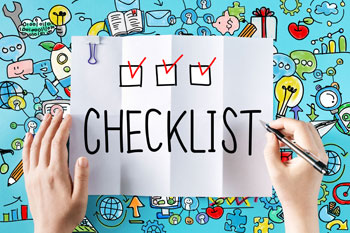Get your free consultation today!
Share with your Colleagues
Categories
ROI Calculator
Moonstone Interactive is the only San Francisco Bay Area web design firm and Internet Marketing expert that offers a free online ROI Calculator
Author: JJ Jenkins

Website development project management involves coordinating various activities to create a fully functional website. It includes planning, doing, and checking tasks. This helps the project meet its goals on time and within budget.
Defining Project Scope and Objectives
The first step in effective website development project management is defining the project's scope and objectives. This involves determining what the website will accomplish, who it will serve, and what features it must include. Clear objectives provide a roadmap for the entire project, ensuring all team members understand the end goals.
Coordinating Team Activities
Coordinating team activities is a critical component of project management. This involves assigning tasks based on team members' strengths and ensuring that everyone works cohesively towards the project's goals. Regular meetings and updates help maintain alignment and address any issues promptly.
Monitoring Progress and Adjusting Plans
Monitoring progress involves regularly reviewing the project's status against its timeline and budget. It requires the use of tools and metrics to track performance and identify areas needing adjustment. Changing plans based on these insights keeps the project on track. It helps the project adapt to any changes or challenges.
The Importance of Effective Project Management
Project management is vital because it helps maintain clarity and direction throughout the development process. Good project management makes sure all team members understand their roles. It helps use resources wisely and reduces risks early.
Maintaining Clarity and Direction
Maintaining clarity and direction prevents confusion and miscommunication. This involves setting clear expectations, deadlines, and responsibilities, which helps team members understand their roles and the project's progression.
Optimal Resource Utilization
Optimizing resource utilization is about ensuring that time, money, and manpower are used efficiently. You need to plan how to use resources wisely. This helps avoid waste and makes sure every part of the project gets enough support.
Mitigating Risks Early
Early risk mitigation involves identifying potential problems before they escalate. This proactive approach helps project managers create backup plans. They can solve problems before these affect the project's timeline or budget.
Key Phases of Website Development
A successful website development project typically follows several key phases:
1. Planning
The planning phase involves defining the project scope, objectives, and deliverables. During this phase, project managers work closely with stakeholders to understand their vision and set clear expectations.
Defining the Project Vision
Defining the project vision is about understanding the stakeholders' needs and the overall purpose of the website. This vision serves as a guiding light during the development process. It makes sure that all efforts meet the stakeholders' expectations.
Setting Milestones and Deadlines
Setting milestones and deadlines helps break down the project into manageable phases. These milestones act as checkpoints, allowing project managers to assess progress and ensure the project stays on track.
Resource and Budget Planning
Resource and budget planning involves determining the project's financial requirements and allocating resources accordingly. This ensures that the project has the necessary support and funding to reach completion without unnecessary delays.
2. Design
Once the objectives are set, the design phase begins. This involves creating wireframes, mockups, and prototypes to visualize the website's structure and appearance.
Creating Wireframes and Mockups
Creating wireframes and mockups allows designers to sketch out the website's layout and design elements. This step is important for seeing the site's structure before development starts. It also helps find design problems early.
Prototyping for User Experience
Prototyping involves building interactive models of the website to test user experience. This phase is crucial for gathering feedback and making adjustments to enhance usability and functionality.
Feedback and Iteration
Feedback and iteration are essential during the design phase. Designers can collect feedback from stakeholders and users. This helps them make changes to ensure the final design meets everyone’s needs and expectations.
3. Development
During the development phase, developers bring the design to life by writing code and integrating various functionalities. This phase is where the technical aspects of the website are built.
Code Development and Integration
Code development involves translating the design into actual code, creating the website's backend and frontend. At this stage, developers also integrate various functionalities, such as databases and third-party services.
Ensuring Scalability and Security
Ensuring scalability and security is crucial during development. Developers must choose technologies that can handle growth and protect user data, implementing security measures to prevent vulnerabilities.
Collaboration and Communication
Collaboration and communication between developers and other team members are key. Regular updates and meetings allow the team to address issues quickly and ensure everyone aligns with the development goals.
4. Testing
Testing is an essential part of the development process. It means finding and fixing any problems. This helps the website work well on different devices and browsers.
Functional Testing
Functional testing checks whether the website operates according to the specified requirements. This includes verifying that all features work correctly and that the site behaves as expected under various conditions.
Performance Testing
Performance testing assesses how the website performs under load. It tests the site’s speed, responsiveness, and stability. This ensures it can handle high traffic without problems.
User Acceptance Testing
User acceptance testing involves real users testing the website to ensure it meets their needs. This phase offers valuable feedback and identifies any remaining issues that the team needs to address before launch.
5. Launch
The launch phase is when the website goes live. It involves final checks to ensure everything is functioning as expected and the site is ready for public access.
Final Quality Assurance
Final quality assurance involves a thorough review of the website to catch any last-minute issues. This includes checking for broken links, ensuring content accuracy, and verifying responsive design across devices.
Deployment and Monitoring
Deployment involves moving the website from a staging environment to a live server. After the launch, the team must continuously monitor the site to ensure it remains stable and quickly resolve any issues.
Post-Launch Evaluation
Post-launch evaluation involves reviewing the website’s performance and user feedback. This helps identify areas for improvement and ensures the site continues to meet user needs and business objectives.
Project Management Tools for Website Development
Leveraging the right project management tools is essential for keeping the development process on track. Here are some popular tools to consider:
Project Tracking Software
Project tracking software helps monitor progress, allocate resources, and manage deadlines. Tools like Trello, Asana, and Jira provide visual dashboards that make tracking tasks easier.
Choosing the Right Software
Choosing the right project tracking software depends on the project’s needs. Consider factors like team size, project complexity, and budget when selecting a tool to ensure it fits your requirements.
Features of Effective Tracking Software
Effective tracking software includes features like task assignment, progress tracking, and deadline reminders. These features keep the team organized and focused on their tasks.
Implementing and Training
Implementing tracking software requires training the team to use it effectively. This ensures everyone understands how to use the tool to its fullest potential, maximizing productivity and efficiency.
Communication Tools
Effective communication is the backbone of any successful project. Platforms like Slack and Microsoft Teams enable real-time communication, file sharing, and collaboration.
Selecting Communication Platforms
Selecting the right communication platform involves considering the team’s needs for messaging, file sharing, and video conferencing. Choose a platform that integrates well with other tools used in the project.
Best Practices for Communication
Best practices for communication include setting clear guidelines, encouraging regular updates, and fostering an open communication culture. These practices keep everyone informed and engaged throughout the project.
Integrating Communication Tools
Integrating communication tools with project management software can streamline workflows. This integration centralizes communication, making it easier to track conversations and updates.
Time Management Tools
Time management tools like Toggl and Clockify help track how time is spent on various tasks. This is crucial for identifying bottlenecks and improving productivity.
Benefits of Time Tracking
Time tracking offers insights into how people allocate their time, helping them identify inefficiencies. This information allows project managers to make informed decisions to optimize workflows and boost productivity.
Implementing Time Management Practices
Implementing time management practices involves setting clear goals for what needs to be tracked. Regularly reviewing time data helps you identify areas for improvement and ensures that you use time effectively.
Improving Productivity
Improving productivity involves using time tracking data to streamline processes and eliminate bottlenecks. This can lead to a more efficient workflow and better project outcomes.
Best Practices for Website Development Project Management
Implementing best practices can significantly enhance the efficiency and success of your project.
Agile Methodology
The Agile methodology emphasizes flexibility and iterative progress. It allows teams to adapt to changes quickly and deliver incremental updates.
Understanding Agile Principles
Understanding Agile principles involves embracing change, focusing on collaboration, and delivering small, incremental improvements. These principles help teams remain flexible and responsive to project needs.
Implementing Agile Practices
Using Agile practices means having regular stand-up meetings. It also involves using sprints for focused work periods. Additionally, you should keep a list of tasks, known as a backlog. These practices ensure steady progress and adaptation to changes.
Measuring Agile Success
Measuring Agile success involves evaluating the team’s ability to deliver value quickly and efficiently. Regular feedback and retrospectives help refine processes and improve future iterations.
Regular Feedback Loops
Incorporate regular feedback loops to gather input from stakeholders and team members. This keeps the project aligned with the client's vision.
Establishing Feedback Channels
Establishing feedback channels involves creating avenues for stakeholders to provide input. This could be through regular meetings, surveys, or digital feedback tools.
Encouraging Constructive Feedback
Encouraging constructive feedback involves fostering an environment where team members feel comfortable sharing their thoughts. Constructive feedback focuses on improvement and helps refine the project.
Implementing Feedback Improvements
Implementing feedback improvements requires analyzing the feedback received and making necessary adjustments. This iterative approach ensures the project evolves and aligns with stakeholder expectations.
Risk Management
Identify potential risks early and develop strategies to mitigate them. This can prevent costly delays and ensure a smooth development process.
Identifying Potential Risks
Identifying potential risks involves assessing various project aspects that could cause issues. This includes technical challenges, resource constraints, and external factors that may impact the project.
Developing Mitigation Strategies
Developing mitigation strategies involves creating plans to address identified risks. These strategies help prevent risks from escalating and ensure the project remains on track.
Monitoring and Adjusting Risk Plans
Monitoring and adjusting risk plans involves regularly reviewing risks and their mitigation strategies. This ensures that plans remain relevant and effective in addressing potential challenges.
Conclusion
Website development project management is a multifaceted process that requires careful planning, execution, and monitoring. Using the right project tracking software and management tools can help your website development project succeed.
Following best practices is also important. Remember, effective communication, flexibility, and risk management are key to navigating the complexities of website development. With these strategies in place, you'll be well-equipped to deliver a website that meets your client's needs and exceeds their expectations.


